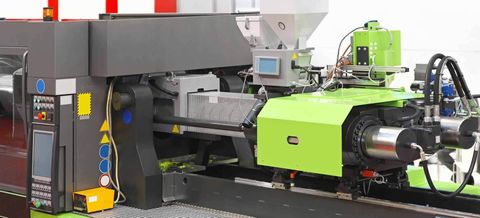AI, Robotics & Quantum Tech: Complete Business Transformation Guide with Insights & Tips
Artificial intelligence, robotics, and quantum technology are advancing rapidly and reshaping how businesses operate across industries. These technologies exist to improve data processing, automation, decision-making, and problem-solving abilities that traditional systems cannot handle effectively. AI focuses on intelligent computing that learns from data, robotics handles automated physical tasks, and quantum technology introduces new computational capabilities far beyond classical machines. Together, they form the foundation of the next era of digital transformation.
The growing availability of advanced processors, cloud platforms, machine-learning frameworks, and automation tools has made these technologies more accessible. As organizations handle increasing volumes of data and operational complexity, the need for precision, speed, and efficiency has fueled adoption. Businesses worldwide now rely on these innovations to improve productivity, enhance workflows, secure information, and explore new opportunities in innovation-driven markets.
Importance
AI, robotics, and quantum technology matter today because they address several challenges faced by modern businesses.
Who It Affects
-
Large companies dealing with vast datasets
-
Small and mid-sized businesses adopting automation
-
Technology developers and analysts
-
Industries like healthcare, manufacturing, finance, logistics, retail, and energy
-
Governments and research institutions
Problems These Technologies Help Solve
-
Data overload: AI assists in analyzing patterns and supporting decisions.
-
Operational inefficiency: Robotics improves speed and reduces repetitive manual tasks.
-
Security threats: AI-driven cybersecurity systems detect unusual activity faster.
-
Complex simulations: Quantum systems handle optimization and modeling beyond classical computing limits.
-
Workflow accuracy: Automation reduces human error in critical operations.
-
Scalability: Digital processes adapt easily as businesses grow.
These technologies provide a foundation for precision, resilience, and long-term digital growth. Industries using predictive analytics, automated processes, and quantum-inspired optimization gain advantages in innovation and strategic planning.
Recent Updates
Technologies in AI, robotics, and quantum computing have evolved significantly in the past year. Several notable updates include:
-
March 2024: Rapid developments in generative AI improved text, image, and data-generation models, enabling better business insights, automation, and content intelligence.
-
July 2024: Robotics advancements expanded applications in warehousing, autonomous movement, and collaborative robots for manufacturing.
-
September 2024: Quantum research centers introduced new prototypes capable of performing more stable qubit operations, improving reliability in scientific simulations.
-
2025 Trends:
-
AI models integrated directly into enterprise workflows
-
Increased use of robotics in retail, healthcare logistics, and food processing
-
Quantum-inspired algorithms used for optimization in supply chain and finance
-
Businesses shifting toward hybrid automation ecosystems combining AI, IoT, and robotics
-
These updates indicate a strong move toward intelligent automation, advanced data science, and long-range digital planning.
Laws or Policies
Government regulations influence how AI, robotics, and quantum technologies operate in a business context. These rules ensure responsible innovation, data security, transparency, and ethical technology use.
Global and Regional Policy Highlights
-
AI Governance Frameworks: Many countries introduced guidelines emphasizing safe development, algorithm transparency, and non-discriminatory AI deployment.
-
Data Protection Regulations: Compliance with privacy standards such as GDPR-like rules in several regions ensures secure use of personal information during AI analysis.
-
Robotics Industry Standards: International safety standards govern the design and interaction of automated systems to protect workers and reduce operational hazards.
-
Quantum Tech Policies: Governments promote research collaborations and security protocols for emerging quantum capabilities, especially where they may impact encryption, cybersecurity, or national infrastructure.
-
Digital Public Infrastructure Programs: Several countries support industry adoption of automation, intelligent computing, and cloud-based solutions within regulated frameworks to promote innovation.
These policies encourage responsible adoption while ensuring businesses implement reliable and transparent systems.
Tools and Resources
A variety of tools support the integration of AI, robotics, and quantum technology within business environments. These include platforms for automation, analytics, modeling, and workflow improvement.
AI Tools
-
Machine-learning platforms for predictive modeling
-
Data analytics dashboards for insights and reporting
-
Natural-language-processing systems for text classification
-
AI-based cybersecurity monitoring tools
-
Intelligent workflow automation platforms
Robotics Tools
-
Collaborative robots (cobots) used in manufacturing and assembly
-
Autonomous mobile robots for logistics and warehouse movement
-
Robotic process automation platforms for digital workflow tasks
-
Sensor-based robotic monitoring systems for equipment and safety
Quantum Technology Tools
-
Quantum simulators for optimization experiments
-
Cloud-based quantum computing platforms
-
Quantum-inspired software for modeling, logistics, and material design
-
Research environments that support advanced computational experiments
Helpful Websites & Resources
-
Technology research centers for AI and robotics updates
-
Cybersecurity organizations providing guidelines and best practices
-
Open-source communities offering frameworks and development tools
-
Government portals sharing policy updates and compliance requirements
Comparison Table
| Technology | Primary Use | Key Strength | Typical Industry |
|---|---|---|---|
| Artificial Intelligence | Data analysis, predictions, automation | High accuracy and scalability | Finance, healthcare, retail |
| Robotics | Physical automation and movement | Precision and speed | Manufacturing, logistics |
| Quantum Tech | Complex simulations and optimization | Extremely fast computation | Research, energy, advanced analytics |
FAQs
1. What is the main difference between AI, robotics, and quantum technology?
AI processes data and makes predictions, robotics performs automated physical actions, and quantum technology solves complex computational problems using advanced quantum states.
2. Can small businesses benefit from these technologies?
Yes. AI-powered analytics, workflow automation, and lightweight robotics tools help improve operations, accuracy, and decision-making even for smaller organizations.
3. Are these technologies safe to implement?
They are considered safe when used within regulatory frameworks, privacy guidelines, and established safety standards. Policies around transparency and responsible development support safe deployment.
4. How will quantum technology impact cybersecurity?
Quantum systems may influence future encryption techniques and support advanced threat detection models. Research programs focus on creating secure and resilient quantum-ready infrastructure.
5. Do businesses need specialized expertise to use these technologies?
Basic tools are increasingly user-friendly, but advanced applications often require technical knowledge in data analytics, automation, or computational modeling depending on the use case.
Conclusion
AI, robotics, and quantum technology continue to transform the way businesses approach efficiency, decision-making, and innovation. These technologies provide new opportunities for data intelligence, workflow automation, and advanced computational modeling. With recent developments, supportive policies, and expanding resources, organizations can explore these technologies in a structured and responsible manner. By understanding their context, importance, and latest trends, businesses can align with modern digital practices and build strategies that support long-term growth and improved operational resilience.





